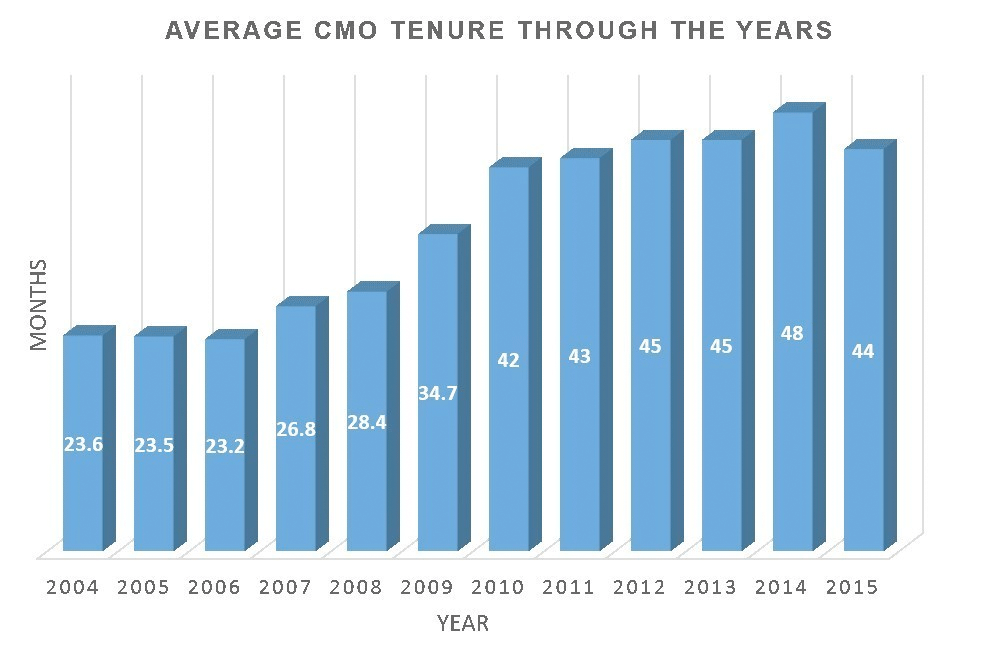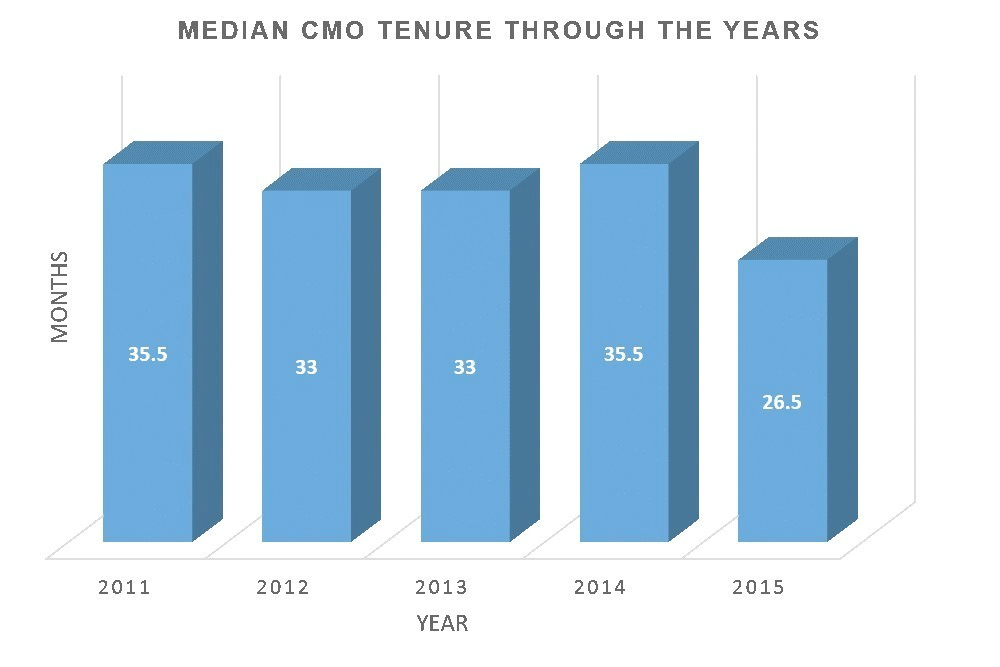Chief Marketing Officer average tenure drops to 44 Months
March 8, 2016
![]() The average tenure for chief marketing officers of leading U.S. consumer brand companies dropped from 48 months to 44 months, according to the 12th annual CMO tenure study by executive search consulting firm Spencer Stuart. This represents the first decline of average tenure in 10 years (since 2006).
The average tenure for chief marketing officers of leading U.S. consumer brand companies dropped from 48 months to 44 months, according to the 12th annual CMO tenure study by executive search consulting firm Spencer Stuart. This represents the first decline of average tenure in 10 years (since 2006).
For the first time, the study also looked at median tenure, which like the “average” numbers also declined from 35.5 months in 2014 to 26.5 for 2015. The median is being provided to give a different perspective on the central tendency of the data, a perspective that is impacted very little by outliers. The CMO tenure data set is based on an analysis of the tenures of CMOs from 100 of the top U.S. advertised brands as of December 31, 2015.
“It’s easy to focus solely on the fact we’re seeing shorter CMO tenures, which is telling, but I think equally compelling is that 30 companies of the 100 in our study have new senior marketers at the helm,” said Greg Welch, a consultant in the Spencer Stuart Marketing Officer Practice, who initiated the firm’s tenure study in 2004. “The industry-wide impact of having nearly one-third of the top CMOs new to their roles is significant, given the incredible influence and buying power that today’s top CMOs wield.”
Who Are These New CMOs?
Twenty-two of the 30 new CMOs (73%) are moving into the top marketing job for the first time. This is consistent with the remaining companies on the list, where 51 of the 70 CMOs (73%) were first-time CMOs when they were named to their current role. As for gender, 10 of the new CMOs (33%) are female, while of the remaining CMOs on the list, 14 of 70 (20%) are female. When it comes to diversity, four of the 30 new CMOs are diverse (11%), compared to eight of the 70 remaining CMOs (12%). Eleven of the new CMOs were external hires, while 19 were internal promotions.
“The fact that more than 70% of these new CMOs are joining the C-suite for the first time requires companies put structures and systems in place to help these individuals be successful,” said Welch. “This isn’t about putting guard rails in place, but about having a thoughtful, well-executed transition playbook and process, with solid support from the peer group. This is particularly critical for a first-time CMO, whether the CMO is an external hire or an internal promotion. Not surprisingly, much of our energy today is not only in identifying and recruiting great marketing leaders, but then in working closely with them to ensure that they get off to a great start in their new roles.”






























